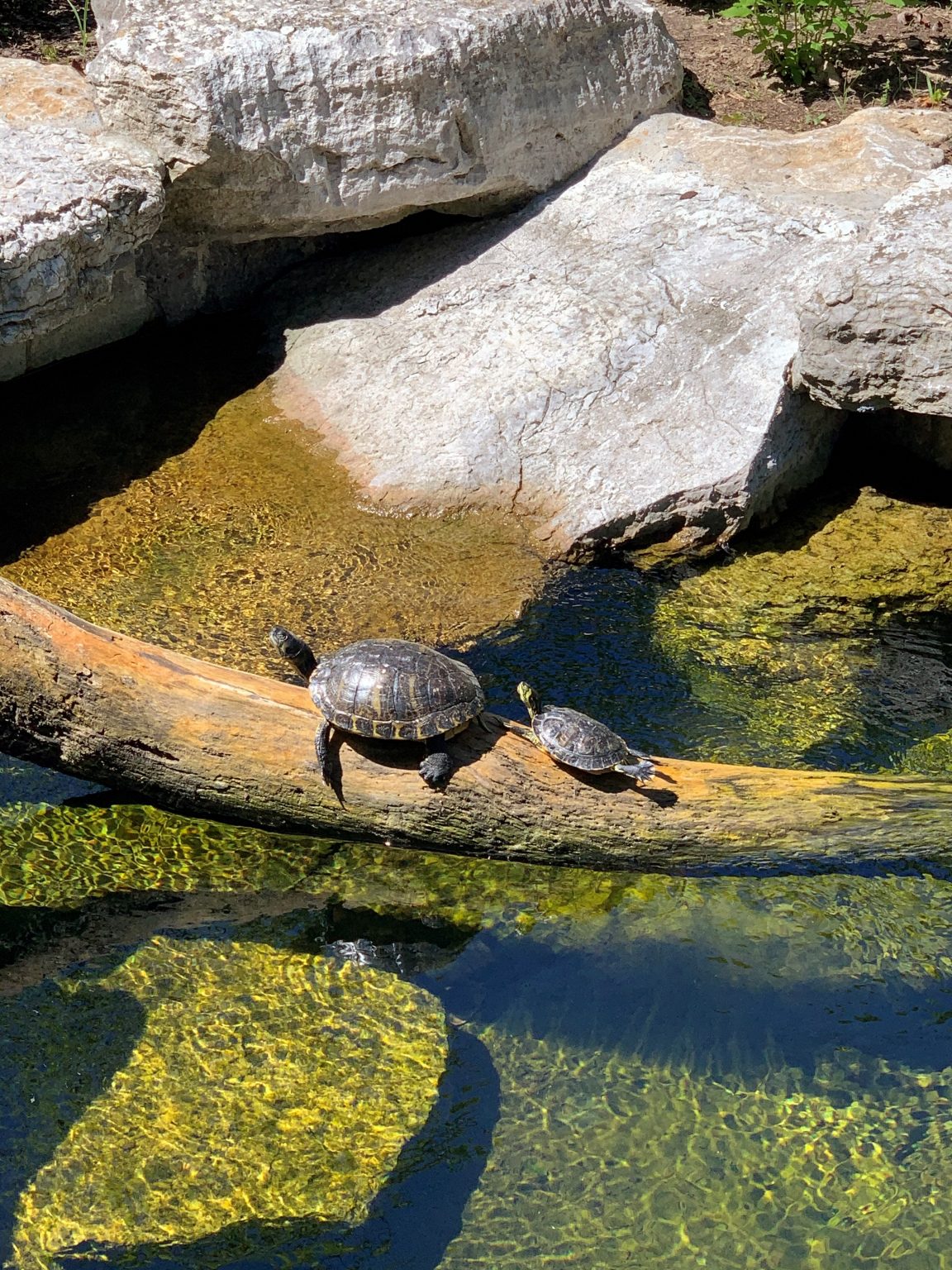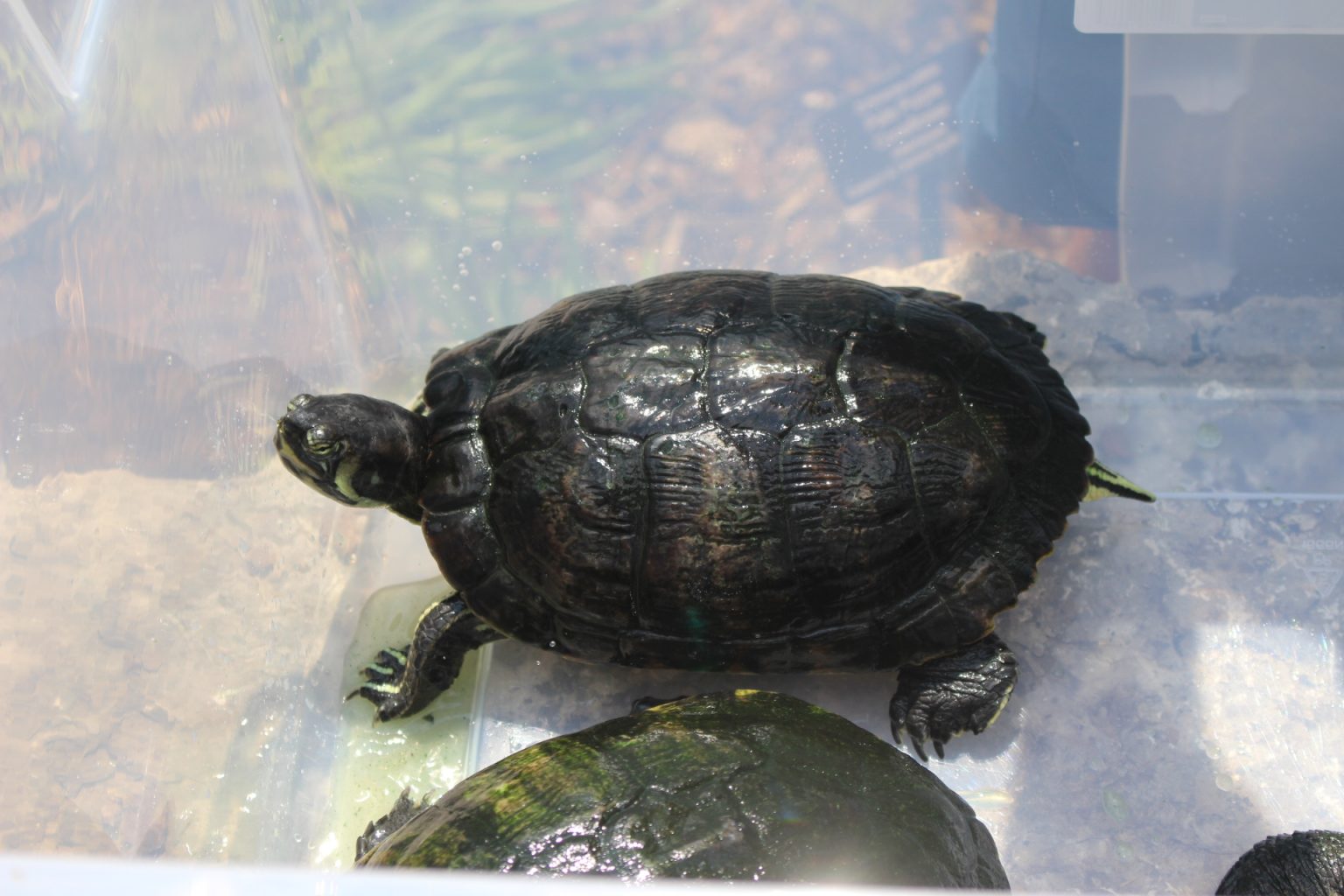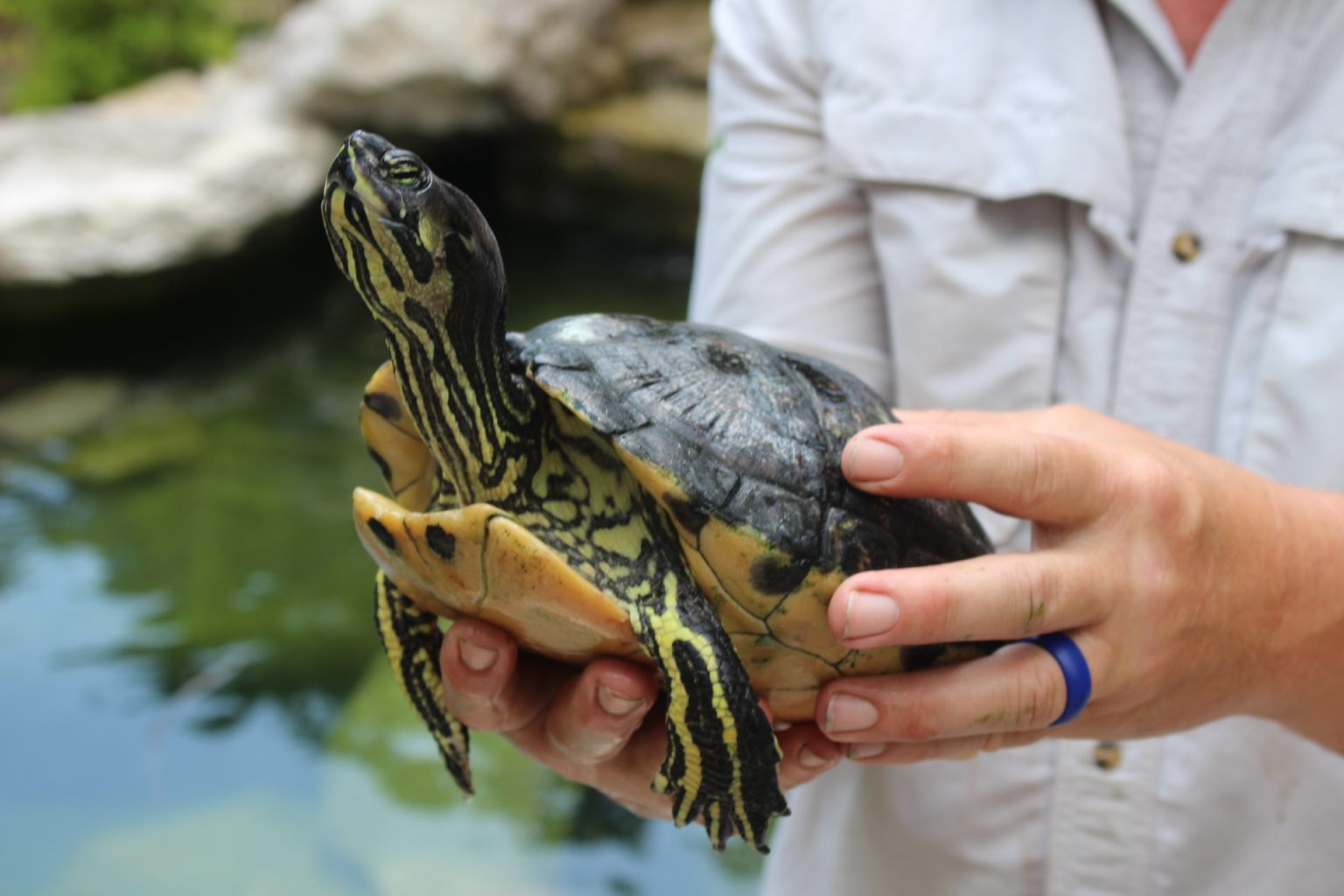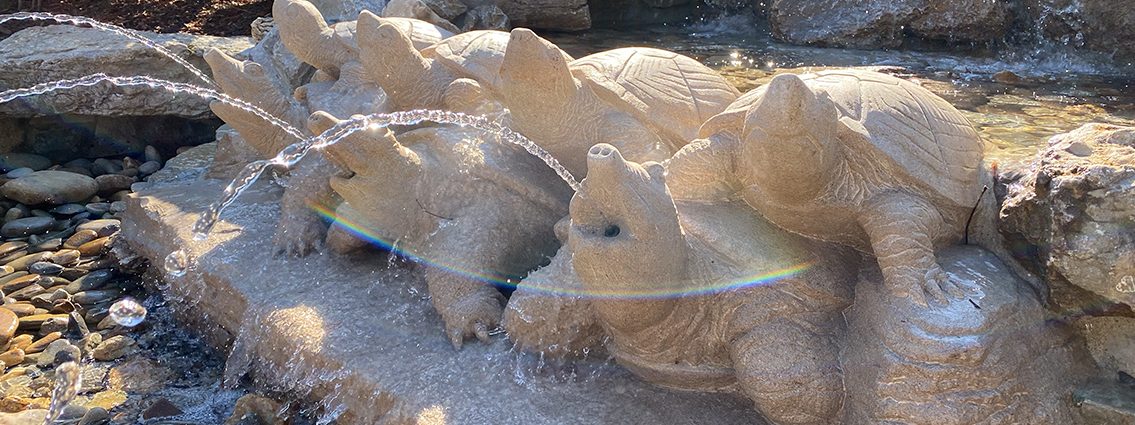It’s World Turtle Day – Come See the Turtles at Cheekwood
Published: May 19, 2021
Sunday, May 23 is World Turtle Day! Did you know that Cheekwood is home to live turtles in the Bracken Foundation Children’s Garden? In its second year, Cheekwood’s turtle program and its sanctuary now have a population of 21 turtles and encompasses both the Children’s Garden habitat and four, behind-the-scenes quarantine tanks. Thirteen of the program’s turtles are in the garden and the remaining few in quarantine will be joining the large display group by June.

We have designed both the temporary quarantine area and the main habitat with lots of room for swimming, basking, brumation (hibernation) and most importantly eating. Our current turtle population consists mainly of turtles from troubled homes where they were unable to grow and thrive. Through a collaborative effort with Ectotherm Exhibit Technologies, the Tennessee Wildlife Resource and United States Fish and Wildlife, Cheekwood obtained permits that allow native turtles to live here under our care.

Twenty-one turtles are a lot of turtles living together in a habitat, particularly with a group as diverse as ours. Our collection has most of the semi-aquatic turtle types that you are likely to see floating in a Tennessee river or pond. Wild water turtles in Tennessee consist mainly of “sliders and snappers” but you may also see Painted, Map or even False Map turtles. With the exception of the snapping turtles, we have all the others including two types of sliders (Red-eared and Yellow-bellied), Western Painted turtles, Map and False Map and finally, the Spiny Softshell turtle. Our lone softshell still has some growing to do before he can move out to the habitat as he was confiscated newly hatched!

The visual characteristics of different turtle species can vary a lot. The descriptors in turtle names can help with identification. For example, the yellow-bellied slider has a lot of long yellow stripes on their legs, neck, and head. Females and males of all our types of turtles have specific physical characteristics. Male turtles generally have elongated nails on their front feet, a longer and wider tail and are usually smaller than females. Our turtles at Cheekwood all have microchips, much like your pet at home, so we can tell one from another.
Turtles are cold-blooded, like other reptiles, and require lots of sun and you are more than likely to see everybody crowded onto logs and on the banks of their habitat. Stop by the Children’s Garden next time you visit us, and you might find a gardener feeding or cleaning Cheekwood’s newest residents. Ask us a question about our turtles, plants in bloom, upcoming events or anything Cheekwood!

